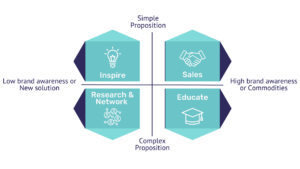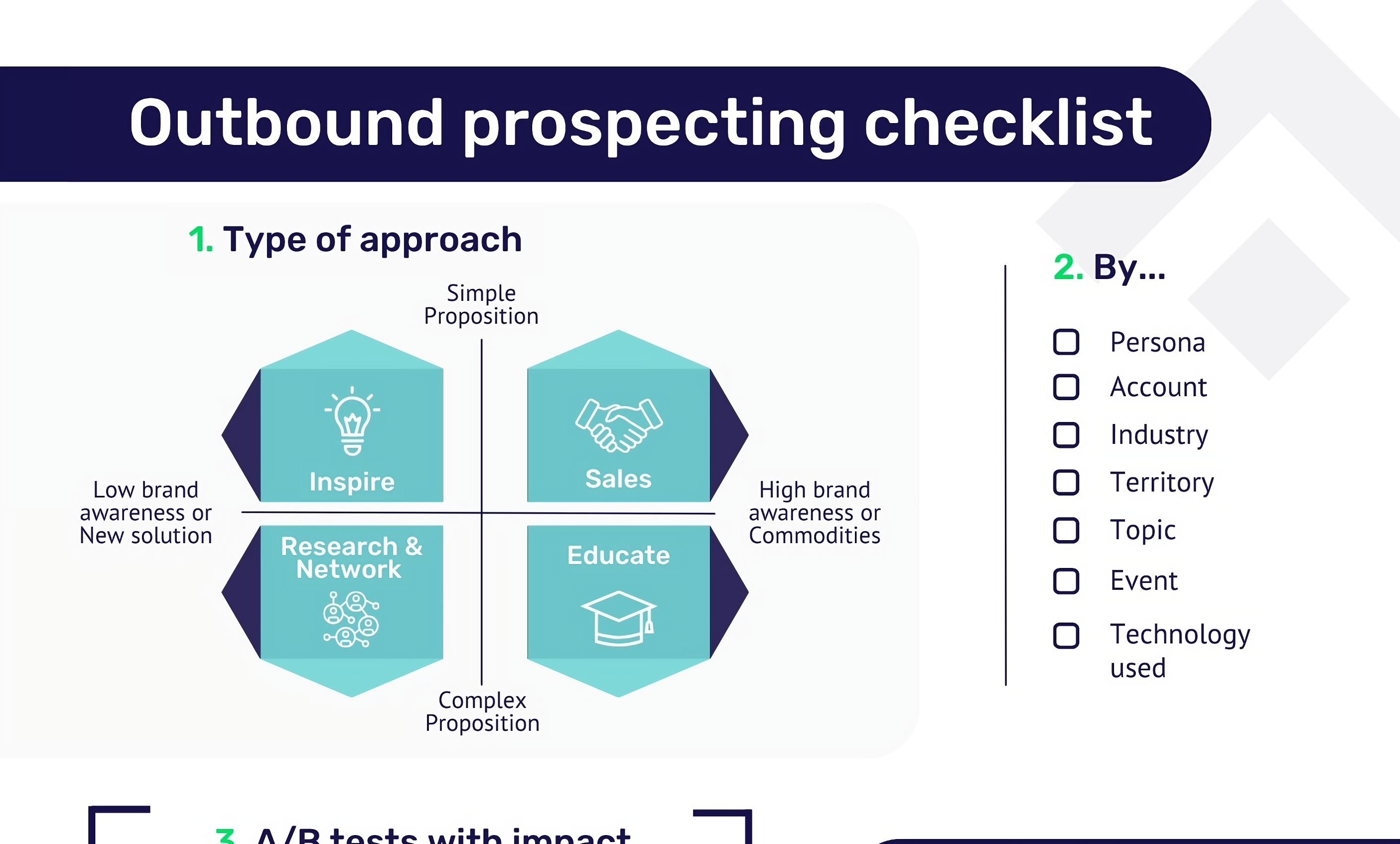Let us introduce you our most valuable tool in our Outreach Strategy arsenal – the Predictable Prospecting Matrix.

This matrix, developed over the past two years by analyzing thousands of different outbound touchpoints, can guide you in structuring your outreach strategy in the right direction from the beginning. When starting from scratch, the possibilities can be overwhelming, and this tool provides useful guidance.
To use the matrix, you plot your product or service in it, which you can do multiple times for different propositions. On the horizontal axis, the left side represents a new solution or low brand awareness, while the right side represents commodities or high brand awareness. On the vertical axis, the top represents simple propositions, and the lower quadrants represent complex propositions.
Each quadrant represents the goal or intention of your outbound campaign structure for each quarter. For instance, if you sell CRM software for Microsoft, which is a commodity with high brand awareness and a simple proposition, you should plot it in the top right corner. This quadrant focuses on outbound campaigns with the direct intention to focus on sales calls, meetings, or demos.
Suppose you work for an innovative startup design agency that creates metaverses for high-end consumer brands. In that case, you should plot it in the left top corner because metaverse is new, not a commodity, the company’s brand awareness is low, and the proposition is pretty simple. This quadrant suggests inspiring your prospects to engage and understand what a metaverse is, how it can help with their challenges, and what it looks like.
This means taking a step back in the sales process and requiring more touchpoints before your prospect is ready to start a conversation about sales. While every quadrant focuses on creating outbound campaigns, the only difference is the starting point. By adapting your communication to your situation in relation to your prospects, it will resonate better, and your communication will match their expectations. Over time, you will have the opportunity to shift your messaging towards a sales conversation.
It is crucial to adjust your content and marketing material to the quadrant where your product or service is placed. This will help you tailor your message to the prospects’ expectations and preferences, which will make it more effective.
After implementing your outreach campaigns, it is essential to test, measure, and adjust them continuously. By measuring the campaign’s success, you can identify what works and what doesn’t. This allows you to tweak your strategy for better results, refine your messaging, and optimize your approach.
Testing and measuring your campaigns are ongoing processes that will enable you to improve your outreach strategy over time. By using the Predictable Prospecting Matrix, you can identify where you should be focusing your efforts and adapt your strategy to fit the specific quadrant. Through continuous testing and measurement, you can refine your approach and boost your outreach success.


